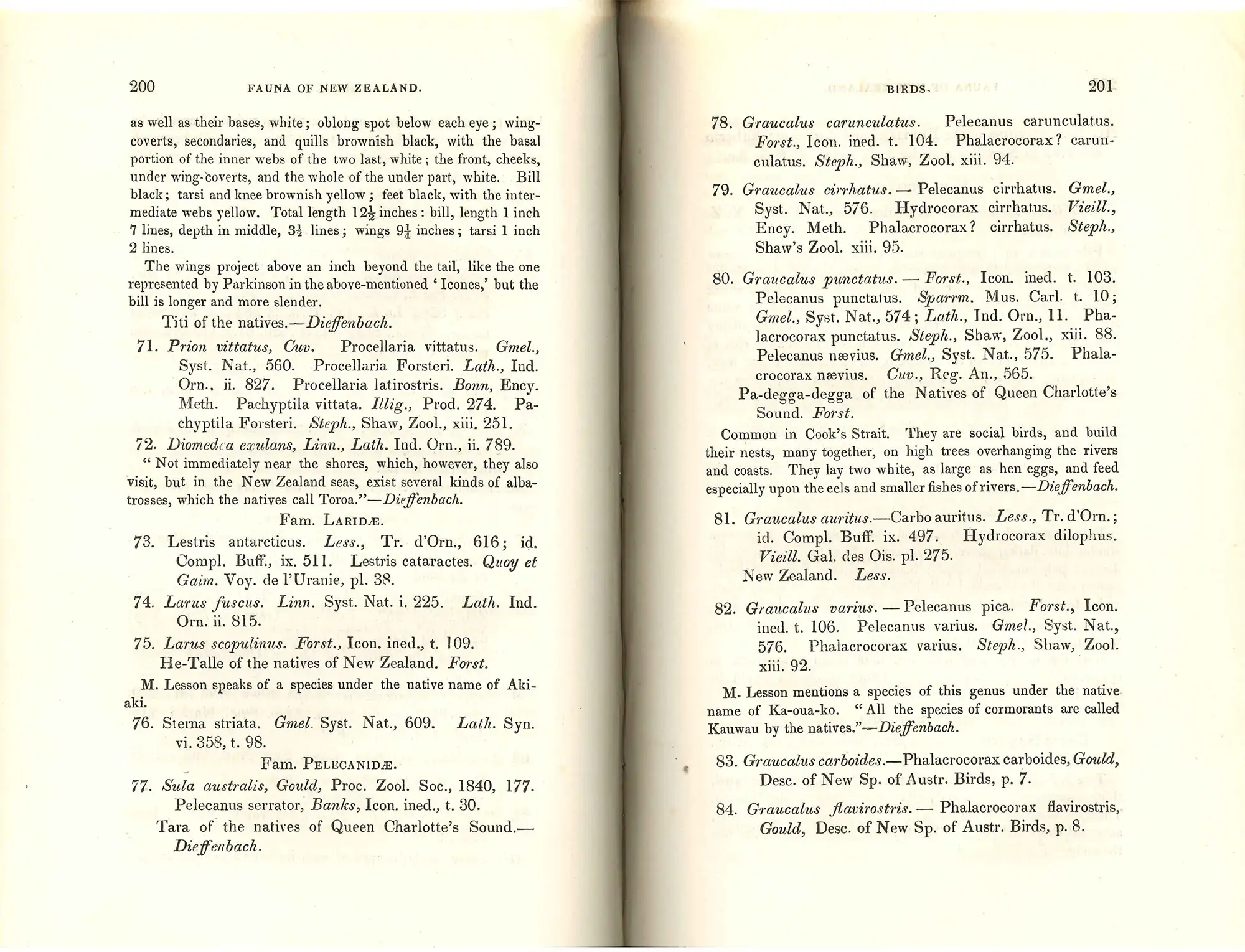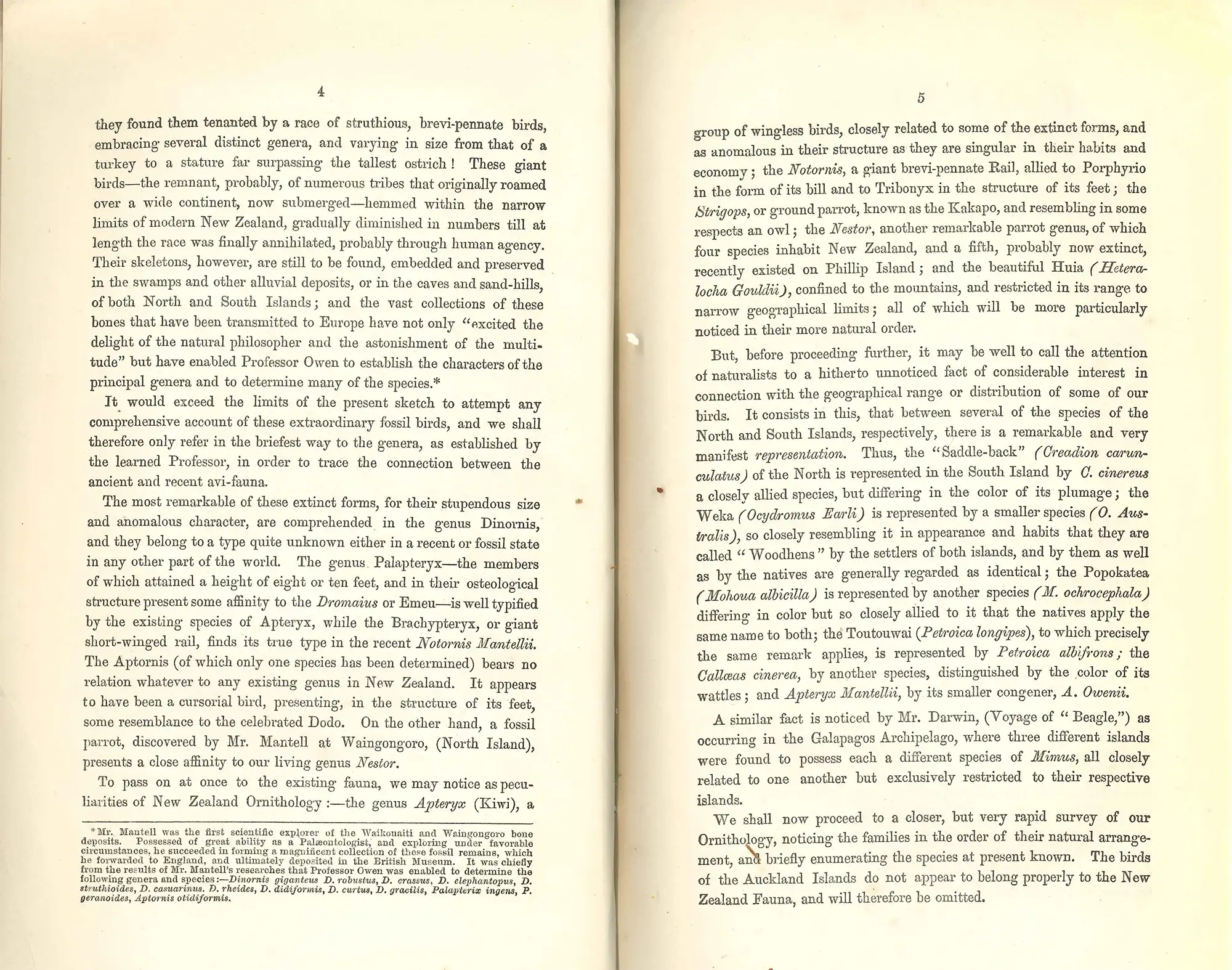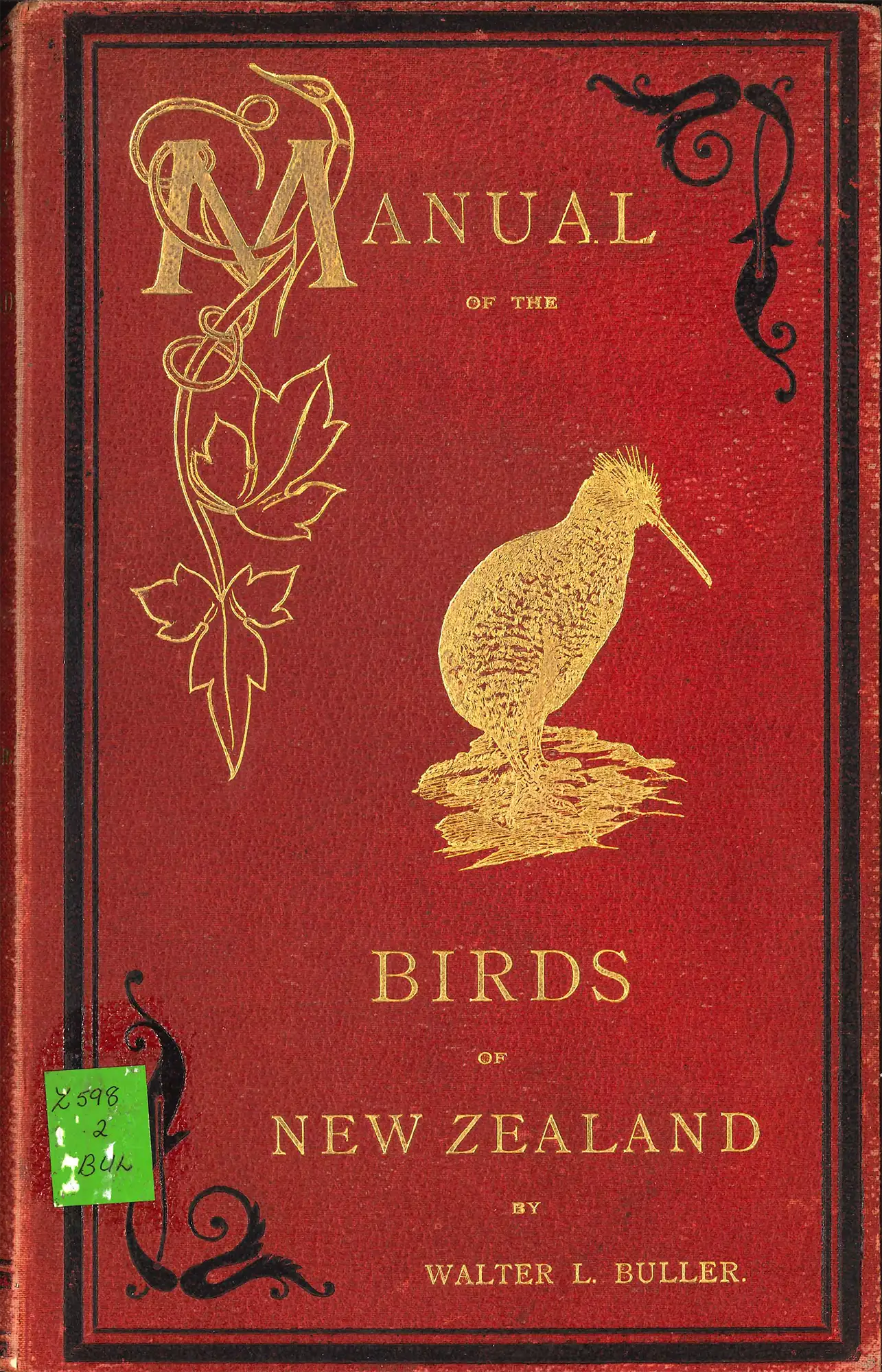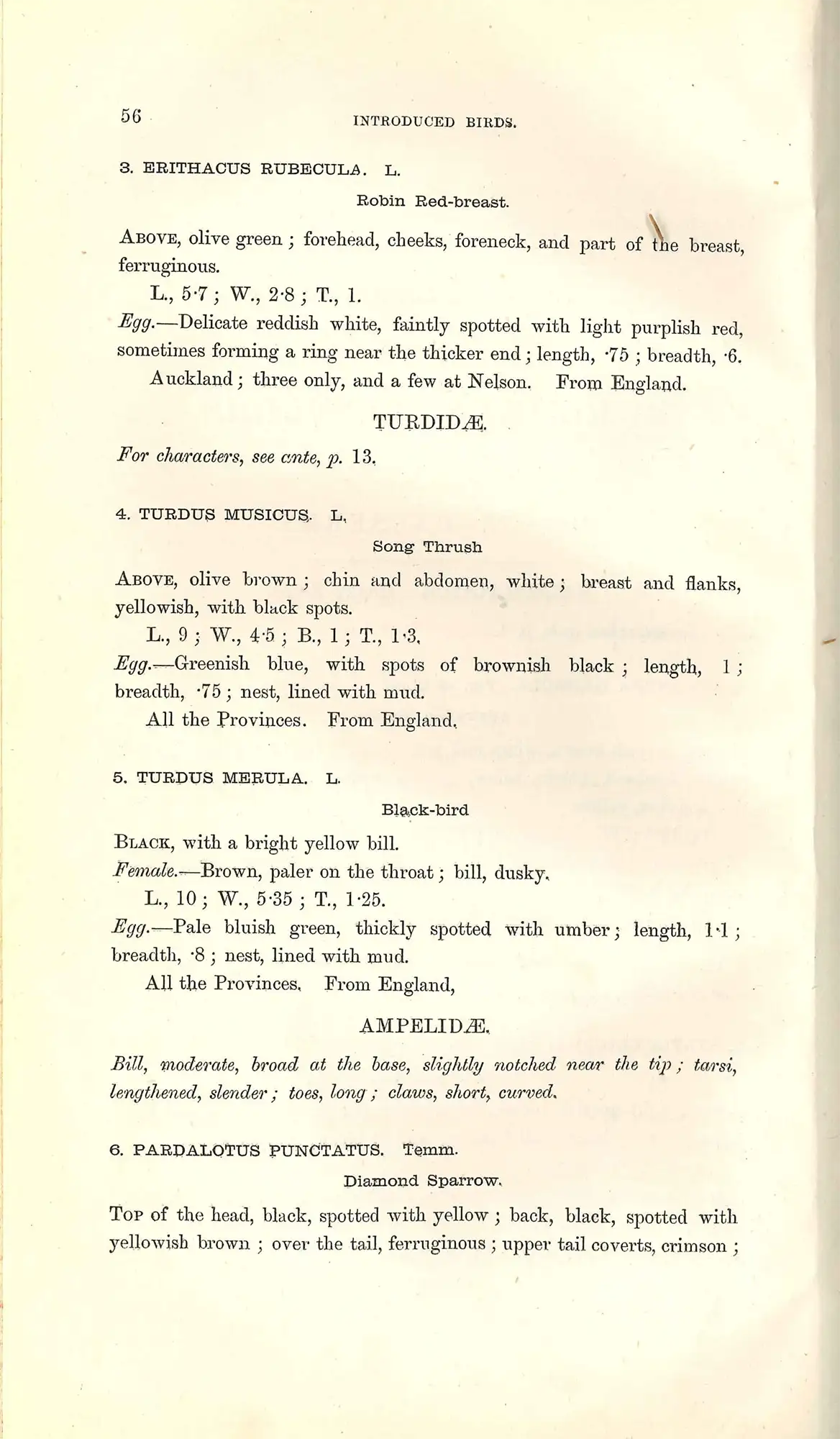Case 9
- Bird Classification in the Victorian Era

G.R. Gray. “List of the birds hitherto recorded as found in New Zealand, Chatham and Auckland Islands, with their synonyma” in Ernst Dieffenbach. Travels in New Zealand. London: Murray, 1843.
The first published list of the birds of New Zealand was drawn up by George Robert Gray (1808-72) of the British Museum and appeared in 1843 as an Appendix to Dieffenbach’s two-volume Travels in New Zealand. Dieffenbach’s Travels was one of the more reliable early accounts of New Zealand’s natural environment and Māori culture.
Gray’s 1843 list comprised of 84 recorded species, but many of these were of doubtful authority and were afterwards expunged. Gray subsequently produced two more complete lists, the most significant being A list of the birds of New Zealand and the adjacent islands, published in 1862. A copy is held in the Robert McNab Collection.

G.R. Gray. “List of the birds hitherto recorded as found in New Zealand, Chatham and Auckland Islands, with their synonyma” in Ernst Dieffenbach. Travels in New Zealand. London: Murray, 1843.
Open image in new window

Walter Lawry Buller. Essay on the ornithology of New Zealand. Dunedin: Printed for the Commissioners by Fergusson and Mitchell, 1865.
W.L. Buller’s first important scientific paper Essay on the ornithology of New Zealand was written in 1865 for the New Zealand Exhibition in Dunedin. This essay established Buller as an authority on birds and was an important predecessor to his more comprehensive treatise to come.

Walter Lawry Buller. Essay on the ornithology of New Zealand. Dunedin: Printed for the Commissioners by Fergusson and Mitchell, 1865.
Open image in new window

Walter Lawry Buller. Manual of the birds of New Zealand. Wellington: Govt. Printer, 1882.
Buller’s Manual of 1882 offers an outline description of 176 species with 40 lithographic reproductions from the Keulemans drawings for the first edition of Buller’s A history of the birds of New Zealand.

F.W. Hutton. Catalogue of the birds of New Zealand: with diagnoses of the species. Wellington: James Hughes, Printer, 1871.
Frederick Wollaston Hutton (1836-1905) was a versatile scientist who lectured in geology and zoology at the University of Otago and was the first Curator of Otago Museum (1873-79), where he assembled much of its founding natural history collection.
Prior to that, Hutton worked for the Geological Survey of New Zealand, where he produced this catalogue describing 160 species of birds, including birds introduced by European settlers. The text is open at the listing of passerines, or perching birds, and includes species which have thrived to this day: the blackbird, thrush, and Australian magpie – although the iconic English robin red-breast failed to become established.

F.W. Hutton. Catalogue of the birds of New Zealand: with diagnoses of the species. Wellington: James Hughes, Printer, 1871.
Open image in new window



